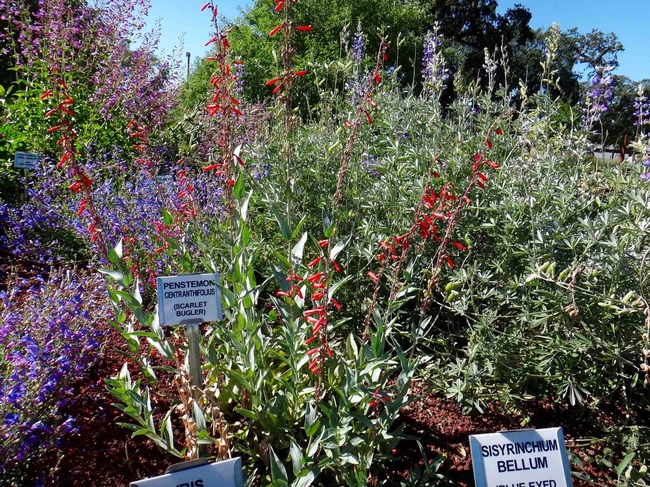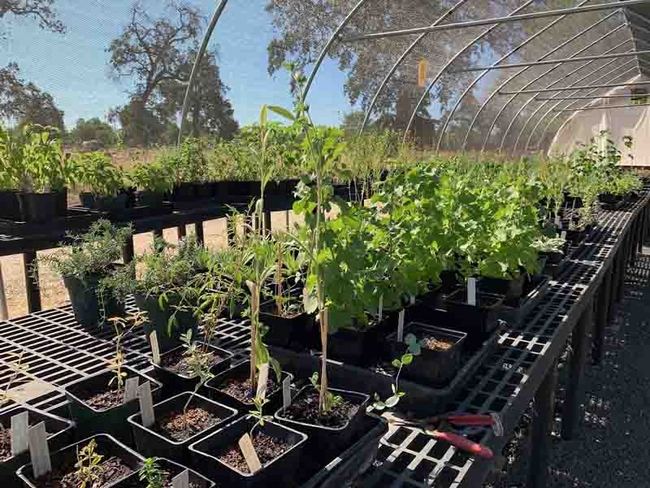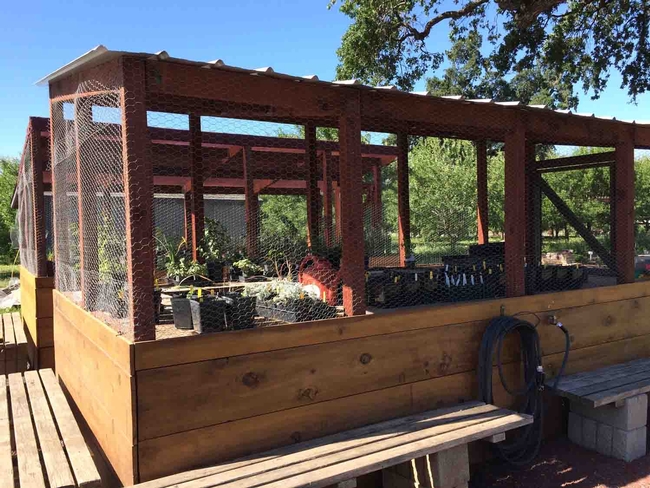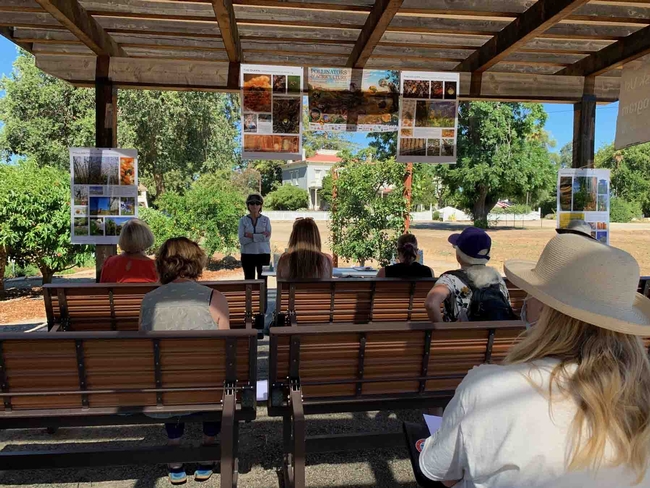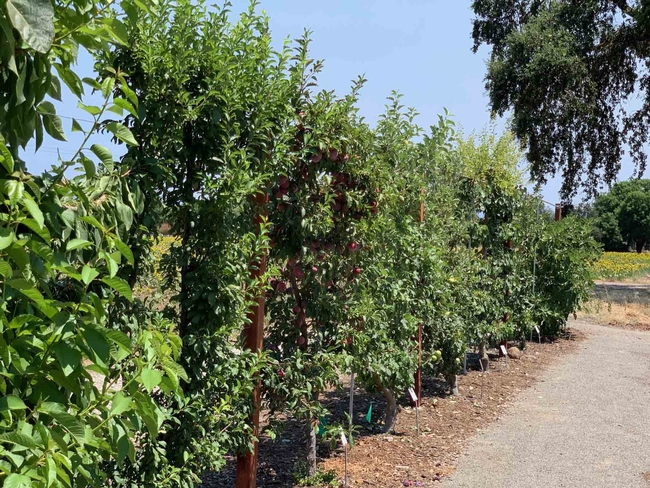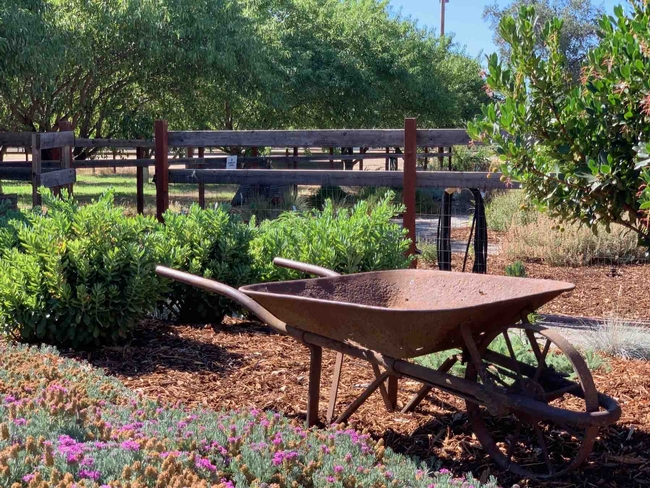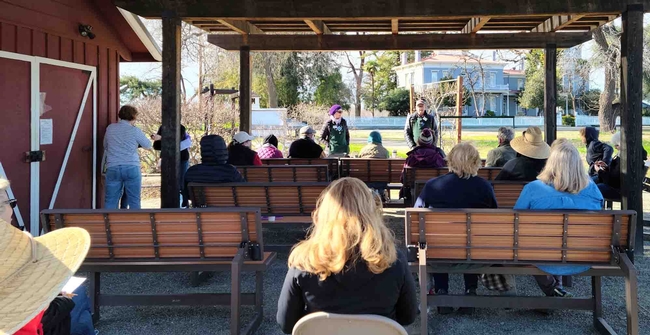There are now fourteen distinct gardens to visit at the Master Gardener Demonstration Garden at Patrick Ranch. Once the final two themed gardens have been planted, the overall master plan will be fulfilled. But don't say the Demo Garden is “finished.” As Kay Perkins, the visionary behind this project, says: a garden is never finished.
Signs identify plants in the Native Plant Garden, Laura Kling
- Backyard food gardens
- Sustainable gardening practices
- Conserving water
- Protecting and nurturing soil
- Protecting water and air quality
- Reducing waste to the landfill
- Reusing and recycling
- Creating wildlife habitat
The various phases of planning, installing infrastructure, and planting (and replanting) the Demonstration Garden have provided the Master Gardeners (MGs) involved in this project with quite an education, as will be detailed below. But first -- a little history. The charter class of the Butte County MGs graduated in June 2008. Perkins was a member of that class, and from the beginning she believed that a Demonstration Garden would be a wonderful teaching tool. The Patrick Ranch Museum was eager to partner with the MGs and has continued to support the project. (For more about the Patrick Ranch Museum and its mission, see Patrick Ranch Museum).
Propagated plants in the hoop house, Laura Kling
As is true with any garden, particularly one as ambitious as the MG Demonstration Garden, lessons were learned along the way. The Demo Garden is located in the middle of a working orchard, 28 acres of a heritage Butte County ranch that are preserved for teaching historical agricultural practices. So, not surprisingly, the very first of the themed gardens, the Butte All-Stars Garden, was planted in a different environment than that of most home gardeners. The location of the All-Stars Garden – in front of the Patrick Ranch Museum Gift Shop – brought with it a lot of public traffic, high visibility, and inevitable scrutiny. At the beginning this area had essentially no shade, and the soil had been impacted (and, in some areas, compacted) by previous orchard practices, including the operation of heavy machinery.
Potting Sheds at the MG Demo Garden, Laura Kling
Kay Perkins leads a workshop in the Outdoor Classroom at the Demo Garden, Laura Kling
All of the themed gardens that comprise the Demonstration Garden showcase what can and/or should be planted in our environment. The last couple of decades have brought increased pressure from drought, and we want to demonstrate how we can all adjust our aesthetics and pivot to a kind of gardening that is sustainable, yet still beautiful and functional. Therefore, our plants (except for some of the edibles), are low (or no) water perennials, and all of them are either Mediterranean or California natives.
Espalier Garden in July, Laura Kling
Berm Garden at the Demo Garden, Laura Kling
Outdoor Classroom at Demo Garden, Laura Kling
UC Master Gardeners of Butte County are part of the University of California Cooperative Extension (UCCE) system. To learn more about us and our upcoming events, and for help with gardening in our area, visit our website. If you have a gardening question or problem, email the Hotline at mgbutte@ucanr.edu or leave a phone message on our Hotline at (530) 538-7201. To speak to a Master Gardener about a gardening issue, or to drop by the MG office during Hotline hours, see the most current information on our Ask Us Hotline webpage.
